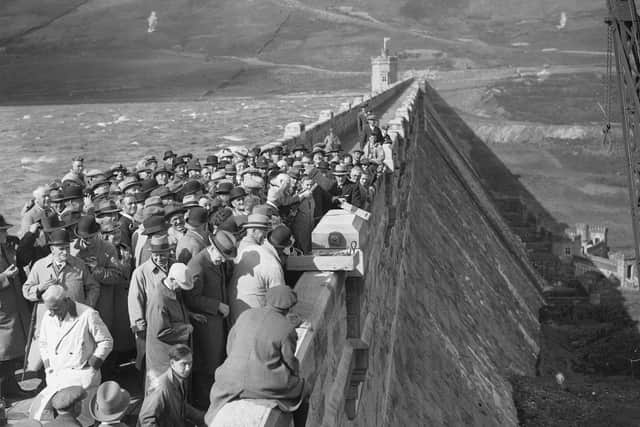Scar House: History behind Yorkshire’s incredible abandoned village that was once home to 1,250 residents
Scar House Reservoir is the second of three reservoirs in Upper Nidderdale alongside Angram Reservoir and Gouthwaite Reservoir and together they attract around 150,000 visitors annually.
Scar House was built to provide water to the Bradford area and from there water is transferred to Chellow Heights via the Nidd Aqueduct solely using gravity and no pumping.
Advertisement
Hide AdAdvertisement
Hide AdWith more than a million tonnes of masonry, the dam rises to 180ft above the river and is nearly 600m long with a height of 71m.


History of Yorkshire’s abandoned village Scar House
Scar House was the last reservoir to be built in the Nidd Valley. It replaced an earlier reservoir, Hayden Carr, which was built in the early 1890s.
They began construction of Hayden Carr in 1894 by Morrison and Mason of Edinburgh. By the time Angram was nearly completed, Bradford Corporation made the decision to build a larger dam at Scar House.
Scar House Reservoir construction began in 1921 with direct labour overseen by Lewis Mitchell, Bradford’s city engineer, and it took 15 years to build.
Advertisement
Hide AdAdvertisement
Hide AdStone for the dam was quarried from a large pit on Carle Fell to the North and North West of the dam. A cable railway that uses a cable, rope or chain to pull trains was built to move stone from the quarry to the dam location.
The village of Scar House used to be populated with more than 1,250 villagers who lived and worked on building the Nidderdale dam in the 1920s.
Through concrete bases there is evidence of the village which can be observed to the left of the reservoir approach road and also just below the car park one of the original buildings is now used by a local farm.
Once the reservoir construction was completed, the historic village hall was moved to Darley, where it is still a village hall, and villagers had to be evacuated.
Advertisement
Hide AdAdvertisement
Hide AdThe Nidd Valley Light Railway was built to enable the reservoirs at Scar House and Angram to be completed. The railway opened in 1907 and closed in 1937.
The former church at Scar House was moved to St Martin’s Church in Heaton, Bradford, in 1932.
Comment Guidelines
National World encourages reader discussion on our stories. User feedback, insights and back-and-forth exchanges add a rich layer of context to reporting. Please review our Community Guidelines before commenting.
